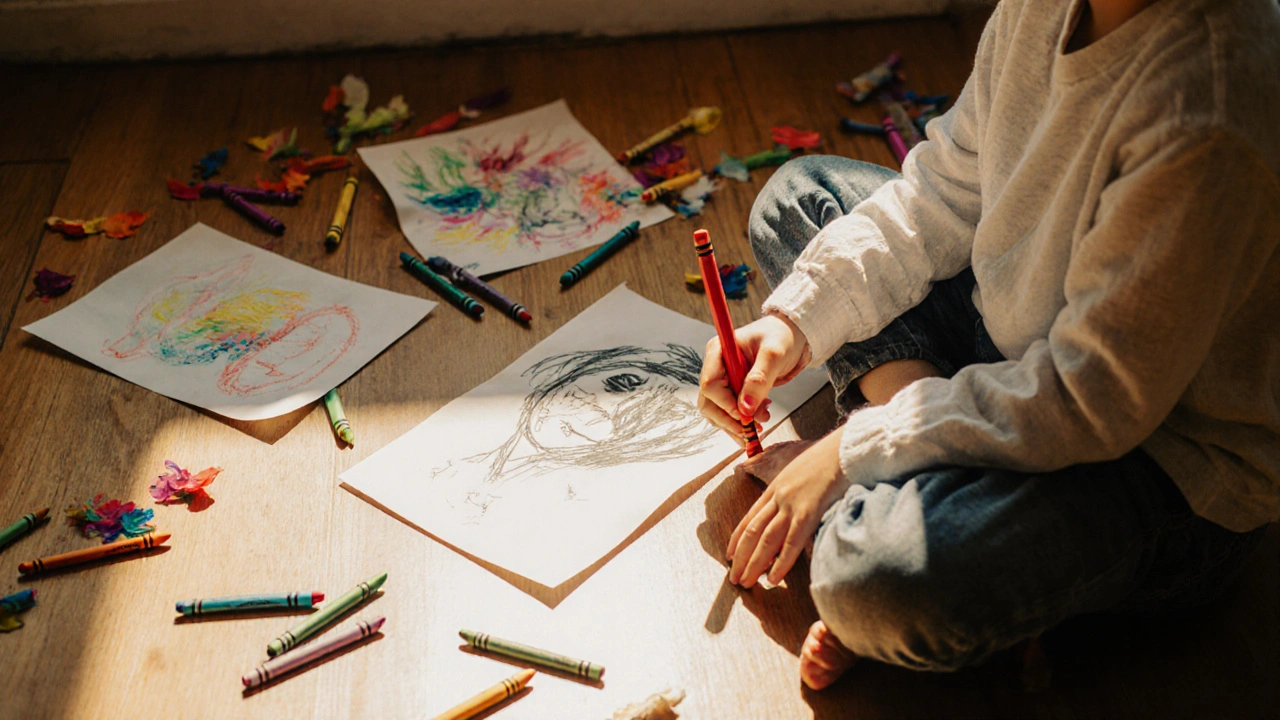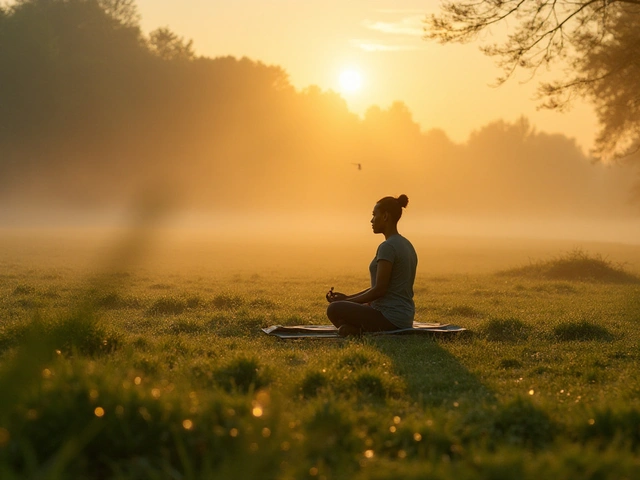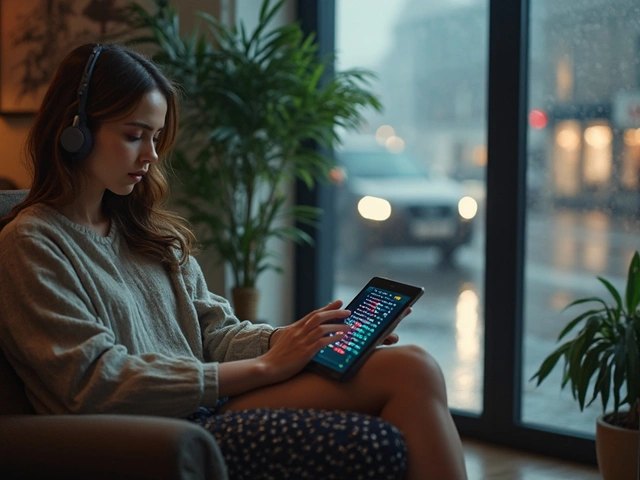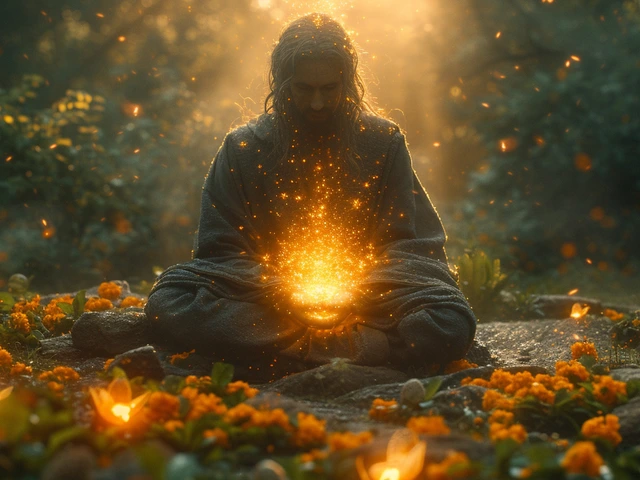Emotional growth isn’t something that happens just by talking about feelings. For many people-children processing trauma, teens struggling with identity, adults dealing with grief-the words just won’t come. That’s where creative arts therapies step in. Not as a replacement for therapy, but as a bridge. A way to feel what’s too heavy to say, to move what’s stuck inside, to make sense of chaos without needing a dictionary.
What Exactly Are Creative Arts Therapies?
Creative arts therapies aren’t just art classes or music lessons. They’re structured, evidence-based approaches led by trained professionals who use art, music, dance, drama, and writing to help people explore emotions, reduce stress, and build self-awareness. Unlike traditional talk therapy, these methods work through sensory and symbolic expression. You don’t need to be ‘good’ at painting or singing. You just need to be willing to try.
The five main types are:
- Art therapy: Using drawing, painting, or sculpture to express inner states.
- Music therapy: Playing instruments, singing, or even just listening to music to regulate mood and connect with emotions.
- Dance/movement therapy: Using body movement to release tension, reclaim agency, and express feelings non-verbally.
- Drama therapy: Role-playing, storytelling, or improvisation to explore different parts of the self or reframe painful experiences.
- Expressive writing: Journaling, poetry, or narrative writing to process trauma and build emotional clarity.
Each one taps into different parts of the brain. Art therapy activates visual-spatial networks. Music therapy engages the limbic system-where emotions live. Movement therapy reconnects mind and body after dissociation. These aren’t random activities. They’re tools backed by research from institutions like the American Art Therapy Association and the World Federation of Music Therapy.
Why Words Fall Short-and How Art Fills the Gap
Think about a child who’s been bullied at school. They come home quiet, withdrawn. When you ask, ‘How was your day?’ they shrug. Words feel too risky. Too big. Too likely to get them misunderstood.
But give them crayons and paper? They draw a dark shape with sharp edges. Maybe a figure with no face. The therapist doesn’t push for an explanation. They say, ‘I see you used a lot of red here.’ That’s all it takes. The child starts talking-not because they were forced to, but because the image gave them a safe starting point.
This happens with adults too. A veteran with PTSD might not be able to describe the sound of gunfire. But when they play a drum in a music therapy session, pounding out a rhythm that matches their heartbeat, something shifts. The body remembers what the mind can’t say. The therapist doesn’t need to interpret the drumming. Just being witnessed is enough.
Neuroscience backs this up. Studies using fMRI scans show that when people create art or move to music, areas of the brain tied to emotion regulation-like the prefrontal cortex and amygdala-light up differently than during verbal processing. Creative expression lowers cortisol levels. It increases dopamine. It helps the nervous system reset.
Emotional Growth Through Making Something
Emotional growth isn’t about fixing yourself. It’s about learning to hold space for your feelings-even the messy, ugly ones. Creative arts therapies teach that.
Take a woman in her 50s who lost her husband suddenly. She started attending art therapy weekly. At first, she painted only gray swirls. Then came streaks of blue. Then, one day, a single yellow flower in the corner of the canvas. No one told her to paint it. It just showed up. That flower wasn’t about forgetting him. It was about remembering him differently-not as a loss, but as something that still lived in her.
That’s emotional growth: not moving on, but moving through. Creative arts therapies don’t erase pain. They help you carry it differently. You learn that you can feel sad and still make something beautiful. You can be angry and still choose a color. You can be broken and still shape clay into something whole.
Unlike talk therapy, where progress is often measured in insights, creative arts therapies measure growth in small, visible acts:
- Choosing a color instead of staying in black.
- Playing a full song instead of just one note.
- Standing up to dance instead of sitting still.
- Writing a letter you never send.
These aren’t small things. They’re acts of courage. And each one builds emotional resilience.
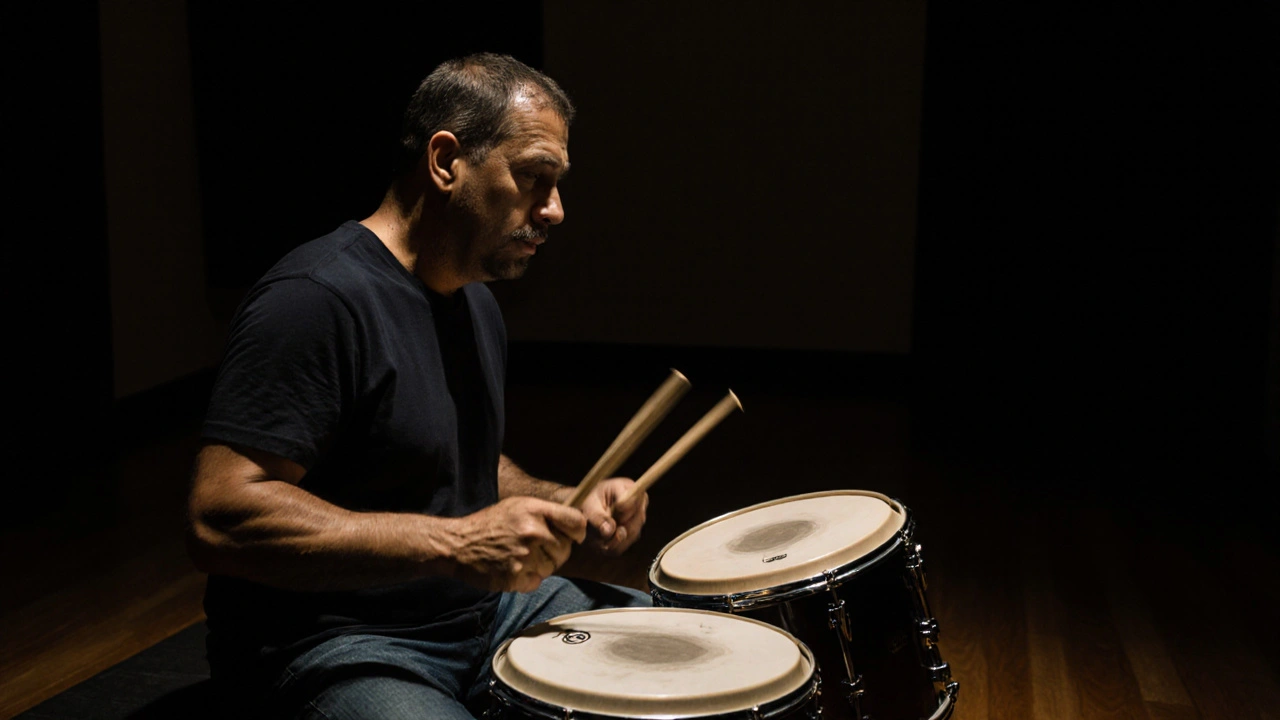
Who Benefits Most?
Creative arts therapies aren’t just for kids or people with diagnosed conditions. They’re for anyone who’s ever felt too much and had no way to say it.
They’re especially powerful for:
- Children with autism or developmental delays: Non-verbal kids often communicate through movement or drawing. Art therapy gives them a voice.
- Survivors of abuse or trauma: When words feel dangerous, creating something safe becomes an act of reclaiming power.
- People with depression or anxiety: The rhythm of painting or drumming can calm an overactive nervous system.
- Older adults with dementia: Music triggers long-term memory. A familiar song can bring someone back to themselves for a moment.
- Teens navigating identity: Drama therapy lets them try on different roles-safe spaces to explore who they are and who they might become.
It’s also used in hospitals, schools, refugee centers, and even workplaces. In Brisbane, a local community center runs weekly music therapy groups for frontline workers after the 2024 floods. One nurse told me she didn’t cry until she played the piano for the first time in six months. She didn’t talk about the patients she lost. She just played. And for the first time, she felt heard.
How to Get Started-Without Spending a Fortune
You don’t need a therapist to begin exploring creative arts for emotional growth. You just need permission to play.
Here’s how to start:
- Keep simple supplies handy: A notebook, a few crayons, a phone with a free drum app, or even a pair of socks you can dance in.
- Set a 10-minute window: No goal. No outcome. Just time to make something.
- Don’t judge what you make: If your drawing looks like a toddler’s, good. That means you’re not trying to impress anyone.
- Notice how you feel before and after: Did your shoulders drop? Did your breathing slow? That’s the signal.
- Try one modality at a time: Start with art if you’re visual. Try drumming if you’re physical. Write if words are easier than movement.
Many libraries and community centers now offer free or low-cost art and music therapy groups. In Brisbane, the South Bank Library runs monthly expressive writing circles. No experience needed. Just show up.
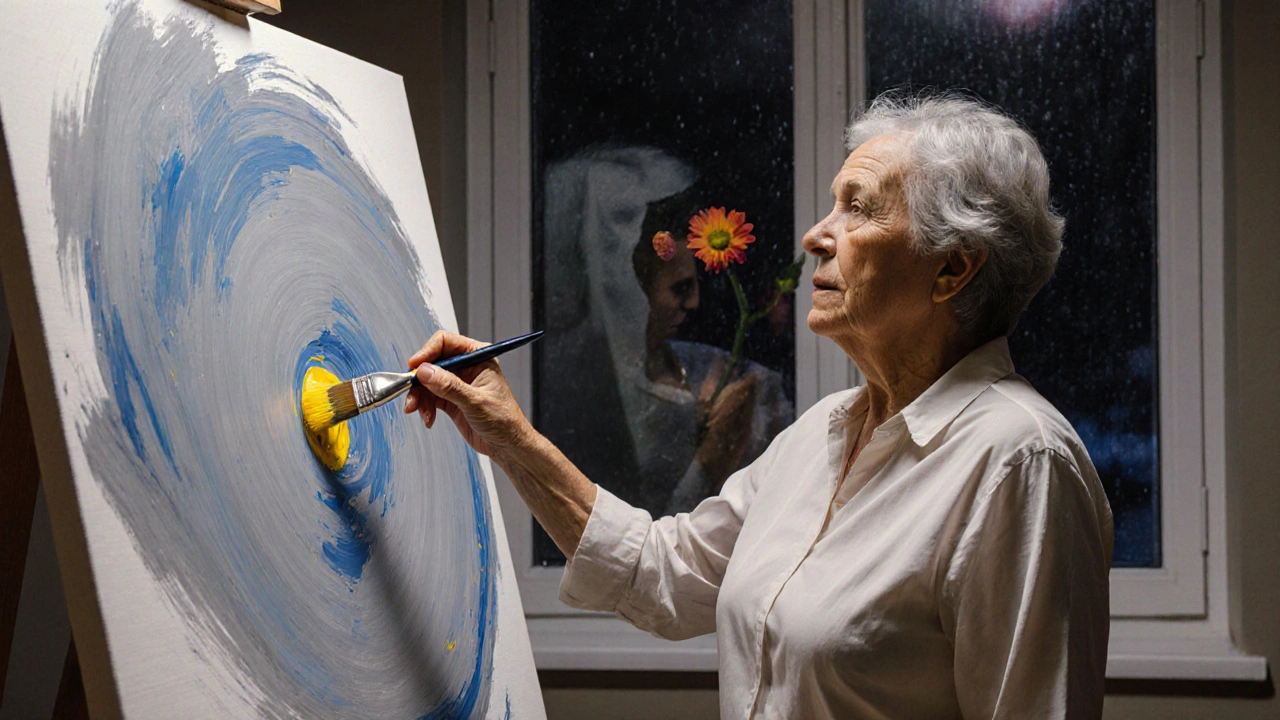
What to Look for in a Therapist
If you’re ready to work with a professional, credentials matter. Look for someone who’s:
- Certified by a recognized body (like the American Art Therapy Association or the Australian Music Therapy Association).
- Trained in both therapy and their art form-not just an artist or a counselor.
- Experienced working with your specific need (trauma, autism, grief, etc.).
Ask: ‘How do you adapt sessions for people who don’t speak much?’ or ‘Have you worked with others like me?’ A good therapist won’t push you to explain. They’ll watch, listen, and wait.
Don’t be afraid to try more than one. It’s like finding the right doctor. Chemistry matters.
Common Misconceptions
There’s a lot of myth around creative arts therapies. Here’s what’s true:
- Myth: You need to be artistic. Truth: The art is a tool, not a product. Your scribble has value.
- Myth: It’s only for kids. Truth: Adults benefit just as much-sometimes more, because they’ve had longer to bury their feelings.
- Myth: It’s a replacement for medication or talk therapy. Truth: It’s a complement. Many people use it alongside counseling or meds.
- Myth: It’s just ‘touchy-feely’ stuff. Truth: It’s neuroscience. Brain scans prove it changes neural pathways.
These therapies don’t promise miracles. But they do promise something rarer: a way to be with your pain without being swallowed by it.
What Happens After the Session?
Some people leave a session feeling drained. Others feel lighter. Both are normal.
After creating something, give yourself space. Don’t rush to analyze it. Don’t show it to anyone unless you want to. Let it sit. The meaning often comes later-in the shower, walking the dog, or waking up in the morning.
Keep a small journal beside your art supplies. Write one sentence after each session: ‘Today I felt…’ or ‘The color I chose was… because…’
Over time, patterns emerge. You start to see what colors you return to. What rhythms calm you. What movements release tension. That’s your emotional map. And it’s yours alone.
That’s the real gift of creative arts therapies. They don’t give you answers. They help you learn how to ask better questions.
Can creative arts therapies help with anxiety?
Yes. Music therapy, art therapy, and movement therapy have been shown in multiple studies to reduce symptoms of anxiety by lowering cortisol and activating the parasympathetic nervous system. People who engage in regular creative expression report feeling calmer, more grounded, and less overwhelmed. The act of focusing on making something-whether it’s painting, drumming, or molding clay-creates a meditative state that interrupts anxious thought loops.
Do I need to be creative to benefit from these therapies?
No. In fact, people who think they’re ‘not creative’ often benefit the most. Creative arts therapies aren’t about making masterpieces. They’re about using materials to express what’s inside. A child’s scribble, an adult’s uneven drumbeat, a hesitant line of poetry-these are all valid forms of communication. The goal isn’t beauty. It’s authenticity.
How long does it take to see results?
Some people feel a shift after one session. Others need weeks or months. Progress isn’t linear. You might feel worse before you feel better, especially when working through trauma. The key is consistency. Even 10 minutes a week of creative expression can build emotional resilience over time. Look for small signs: sleeping better, feeling less irritable, noticing more colors in your surroundings.
Are these therapies covered by insurance?
In some cases, yes. In Australia, Medicare may cover art or music therapy under certain plans like the Chronic Disease Management plan, if referred by a GP. Private health insurers sometimes include it under ‘allied health’ benefits. Check with your provider. Community programs and nonprofits often offer sliding-scale fees or free sessions, especially for trauma survivors or low-income individuals.
Can I do this on my own, or do I need a therapist?
You can absolutely begin on your own. Many people use creative expression daily as self-care. But if you’re dealing with deep trauma, severe depression, or PTSD, working with a trained therapist is strongly recommended. A therapist can help you navigate intense emotions safely, avoid re-traumatization, and recognize patterns you might miss alone. Think of it like exercise: you can walk alone, but a physical therapist helps you heal a broken leg.
